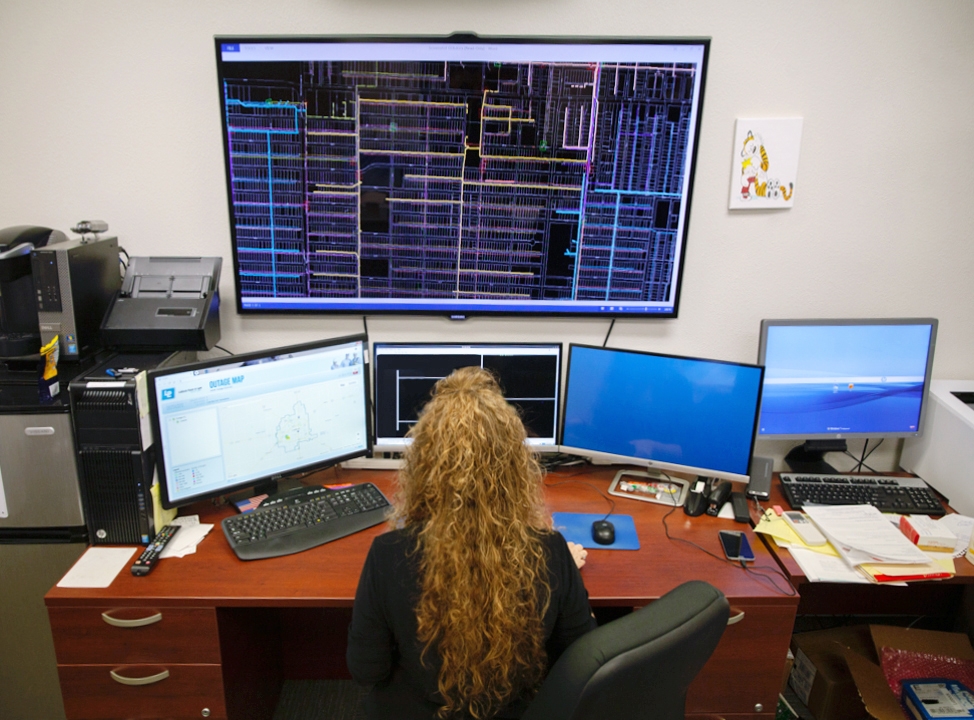


November 11, 2019
As the third largest municipally owned electric utility in Texas, getting power to every customer takes more than meets the eye. Lubbock Power & Light’s system includes over 107,000 meters, 4,936 miles of power lines, three power plants and 38 substations.
Overseeing all of the different pieces takes the right technology and skilled operators. That’s where SCADA, or Supervisory Control and Data Acquisition comes in.
SCADA is a computer system that monitors, gathers and processes data from across the LP&L system in real time. SCADA allows operators to easily monitor for any interruptions in the city’s electrical grid. Without it, pinpointing the cause of a service interruption would be like trying to find a needle in a haystack.
SCADA Administrator and native Lubbockite Melissa Saddler has been involved with the SCADA system for over 27 years.
“When I first started as an operator, I loved the quick pace, problem solving and analytical aspects of the position,” said Saddler. “I began volunteering to help the administrators and used every opportunity to learn about the system. Eventually, I transitioned over to the administration side of SCADA.”
SCADA is monitored on a continuous basis in order to spot trouble early on, whether it’s identifying power outages during a storm or managing peak energy demands in the summer. SCADA allows LP&L to safely, rapidly and efficiently restore and stabilize systems.
Think of it like a 9-1-1 response center. When someone dials 9-1-1, the call center operator can track their location in real time through their system map, then remotely dispatch first responders to their location. SCADA works in similar ways.
In the event of an outage, SCADA detects the service interruption through its dynamic system map, which shows all circuits, feeds and equipment across LP&L’s service area.
From there, the outage management system (OMS) takes over and processes hundreds of incoming customer calls, advanced meter notices and equipment failure alerts.
Within just 20 seconds, the OMS pinpoints the location where the problem most likely originated.
Armed with that information, the distribution team is dispatched to investigate.
“There’s a lot that goes on behind the scenes during an outage,” said Saddler. “Customers can see a high-level view of any outages on the outage map, which automatically updates each time an activity happens.”
Because outages don’t follow a 9-5 workday, Saddler and one other administrator are both on call 24/7 for the SCADA system and outage support.
“Our Operations department is made up of about 30 people, and the majority of what we learn is through on-the-job training,” said Saddler. “Technology is always changing so we’re routinely attending workshops and trainings to ensure we’re doing the best possible job for our customers.”
As one of the leaders at LP&L, Saddler says this job “chose me,” and encourages others to not hesitate to go after what they’re passionate in.
“I feel that by being confident, self-assured and an expert in your job, you can be successful in any field. Be a person of value and be a leader, and that’s what should stand out.”

